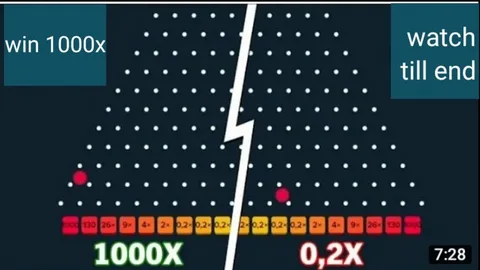Plinko is one of the most iconic and visually engaging games found in casinos, game shows, and even online platforms. Its simple yet captivating design is based on a ball dropping through a field of pegs, bouncing unpredictably until it lands in a slot that determines the player’s prize. To fully appreciate the game, it’s essential to explore the plinko game mechanics: understanding peg placement and ball drop, as these elements directly influence gameplay, strategy, and outcomes.
The Basics of Plinko
At its core, Plinko involves a ball being dropped from the top of a board filled with rows of pegs. As the ball descends, it hits these pegs and bounces left or right before ultimately landing in a slot at the bottom. Each slot corresponds to a different prize or score value.
Understanding how the ball interacts with the pegs is key to predicting potential outcomes and mastering the game.
Peg Placement: The Heart of Plinko Mechanics
One of the most critical aspects of Plinko game mechanics is the strategic placement of pegs. These pegs are arranged in a staggered grid pattern, creating a series of pathways for the ball to bounce along.
- Staggered Grid Arrangement: The pegs are usually set so that each row is offset from the one above it, forcing the ball to make multiple directional decisions as it falls.
- Spacing and Density: The distance between pegs affects how frequently the ball changes direction. Closer spacing increases randomness, while wider spacing allows for more predictable bounces.
- Height and Number of Rows: More rows mean more bounces, which increases the unpredictability of the ball drop.
By understanding peg placement, players and designers can grasp how these configurations influence the game’s randomness and excitement.
The Dynamics of Ball Drop in Plinko
The second essential element in Plinko game mechanics: understanding peg placement and ball drop is the behavior of the ball as it falls. Gravity, ball size, and the angles at which the ball hits pegs all contribute to its path.
- Initial Drop Position: Where the ball is dropped at the top impacts the initial trajectory and how it encounters pegs.
- Physics of Bouncing: Each peg collision causes the ball to bounce either left or right, and this outcome is often influenced by subtle factors such as peg shape, ball elasticity, and friction.
- Randomness and Probability: Because of the many random bounces, predicting the exact slot the ball will land in is nearly impossible, but probabilities can be calculated for different outcomes.
Understanding the ball drop dynamics helps players appreciate why Plinko remains a game of chance, despite any attempts to influence the result.
Why Understanding Plinko Game Mechanics Matters
By delving into Plinko game mechanics: understanding peg placement and ball drop, players gain insight into the game’s fundamental randomness and fairness. For designers and engineers, this knowledge helps create balanced and engaging game experiences that keep players coming back.
Moreover, for enthusiasts looking to improve their chances or simply enjoy the game more fully, appreciating these mechanics turns Plinko from a mere game of luck into a fascinating study of probability and physics.


